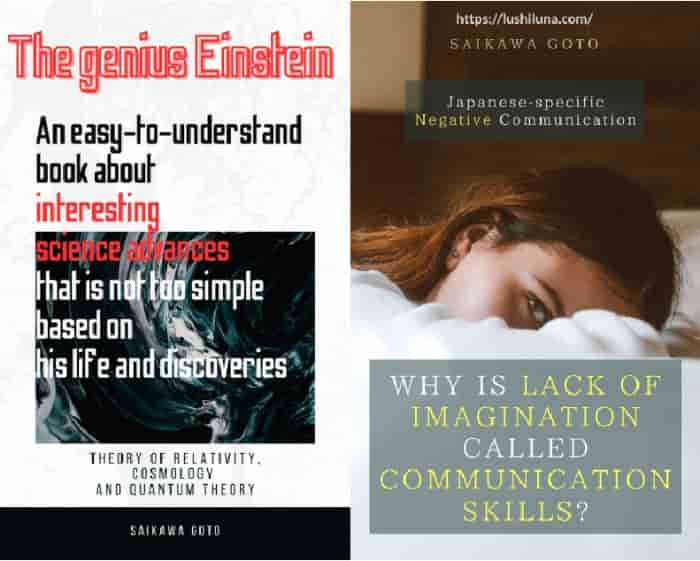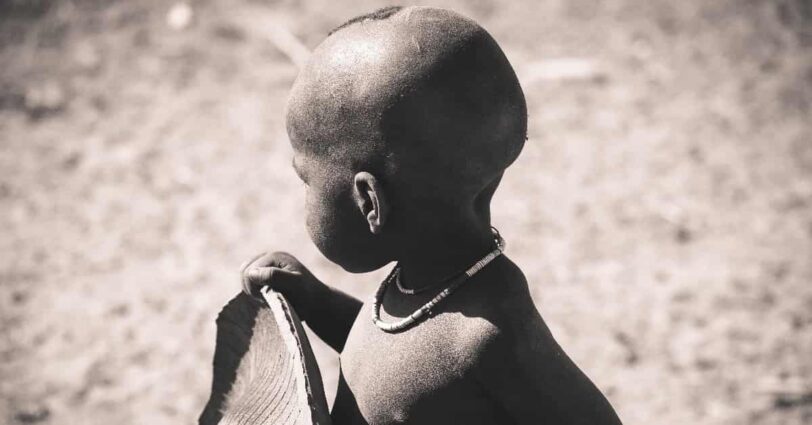I wrote this article in Japanese and translated it into English using ChatGPT. I also used ChatGPT to create the English article title. I did my best to correct any translation mistakes, but please let me know if you find any errors. By the way, I did not use ChatGPT when writing the Japanese article. The entire article was written from scratch by me, Saikawa Goto.
Introduction
Movies and books covered in this article

Three takeaways from this article
- The nonsense of condemning “slavery” on the basis of “modern common sense,” saying, “I would never do such a thing.”
- The author’s 20-year spectacular struggle for freedom, including 7 years in an attic with no sunlight.
- The desperate days when he was forced to feel “I would rather die” for his beloved child.
Self-introduction article


Published Kindle books(Free on Kindle Unlimited)
“The genius Einstein: An easy-to-understand book about interesting science advances that is not too simple based on his life and discoveries: Theory of Relativity, Cosmology and Quantum Theory”
“Why is “lack of imagination” called “communication skills”?: Japanese-specific”negative” communication”
The quotes in the article were translated using ChatGPT from Japanese books, and are not direct quotes from the foreign language original books, even if they exist.
A Book Written by a Black Woman, a Former Slave, about the “Reality of American Slavery,” Which was Thought to be a Novel Written by a White Man

When you hear that “there was a time in America when black people were used as slaves,” everyone should feel it’s a terrible story. And they would think, “I don’t understand how such inhumane things could have happened,” “I would never do such a thing.”

However, I find that perception a little scary. That’s because it’s just a way of looking at it as “those involved in the slave system were abnormal.” I think that if everyone thinks that way, tragedy will not disappear from society.
“Slavery” was a “common sense” in the southern United States at that time. It was a system that “many people of the same era thought was” natural. “If we liken it to modern Japan, it might be similar to the “death penalty system”. I think that many Japanese people do not have a strong aversion to the “death penalty system”. If the aversion is high, there should be voices from the public and it should be abolished. I think that many Japanese people do not feel much discomfort with the idea that “heinous criminals should pay with their lives.”
However, currently, the death penalty has been abolished in many countries around the world. In advanced countries, there are only a few countries such as Japan, the United States, and South Korea where the death penalty exists, and in South Korea, it has not been executed for many years. The common sense of “death penalty system” can be said to be quite a minority when viewed globally.

Or, “eating whale meat” is often criticized by the West. I think younger generations have not eaten whale meat in their daily meals, but they probably don’t feel particularly resistant to “eating whale meat.” However, for Westerners, it seems to be an unacceptable act. This feeling is also difficult for Japanese people to understand. In addition, I was surprised to see news from the UK that cooking lobsters and octopuses “while they are alive” might become illegal. This is because evidence has been gathered that they “feel pain.” In fact, there are already several countries that have banned the live cooking of lobsters.
These sensibilities are also difficult for us Japanese to understand. This is all because “our common sense” and “the common sense of the world” are different.

So, I feel that it is not fair to condemn those who acted according to “the old Southern American norm” by today’s standards and label them as having done something “terrible”.
So, what does learning about “slavery” bring us? It’s about “imagining that we ourselves may be doing or saying things that will be criticized by people 100 or 200 years from now.”

And to have such a perspective, this book can be very useful. It is a work that vividly describes the reality of “slavery” written by a black woman who was actually used as a slave in the Southern United States where slavery existed.


A Work that Appeared in a Unique Form as a “Classic Discovered in Recent Years”
What would you think if you knew that an unknown author named Harriet Ann Jacobs was competing fiercely for rankings in America’s classic bestsellers with great writers such as Dickens, Dostoevsky, Jane Austen, and Mark Twain?
The translator writes that while Dickens and Dostoevsky are well-known classic authors, a book written by an unknown author named Harriet Ann Jacobs is garnering attention as a classic work alongside the works of these great authors.

The famous works of female protagonists written by female authors that are still widely read today include “Jane Eyre” (1847), “Little Women” (1868), and “A Little Princess” (1888), which were all written around the same time as this book, which was written in 1861.
However, “Incidents in the Life of a Slave Girl,” written over 150 years ago, was not known for a long time after it was written.
This book was completely forgotten even in the United States for over a century after its publication. It was eventually published at the author’s expense because the publisher went bankrupt. At the time of its publication, the author, Jacobs, wrote under the pen name “Linda Brent” due to the fact that those involved were still alive and the social background of the time.
Although this work is now considered a “classic,” it was completely obscure and buried in history at the time of its writing. However, through various circumstances, it was rediscovered as a work written by a black woman who had been a slave, and it has gained many readers today.

Sato Masaru, who was in charge of commentary, sees this book not as “non-fiction” but as a “non-fiction novel”. Sato Masaru judged that it is not appropriate to consider it as “non-fiction” because it is written by the author digging up memories in her later years and is written in the form of the author’s memoir, so there is only the author’s assertion and it is not possible to know the story of the person who is being written badly.
However, on the other hand, he also wrote that “it is not necessarily not non-fiction”. He says that if it is classified, it is a “non-fiction novel”, but it is almost like “non-fiction”. For matters that can be objectively investigated based on the author’s description, they have been proven to be almost factual in subsequent research. Moreover, she described the mental landscape at that time as much as possible. Readers can basically take it as “this was the fact,” including her emotions.

There are many stories depicting slavery and the slave system, but they inevitably become based on the “white perspective” and “imagined by white people.” I think this book has become a bestseller mainly in Europe and America because it provides an opportunity to know the viewpoint of slaves so realistically and accurately, which has never existed before.

This is definitely a book that I can assert is a “must-read.”
The Author Repeatedly Appeals to the Reader in this Book, Saying “this is a Fact,” and the Reasons Why They were Not Believed to be Facts
To the reader, I clearly state that the story I am telling is not a novel. I understand that there are extraordinary events that have happened in my life that may seem unbelievable. Nevertheless, all the events are completely true. I did not exaggerate the evil caused by slavery. Rather, this description is only a fragment of the truth.
It is understandable that the author writes “it may seem unbelievable,” as the reality depicted goes far beyond the situation that we vaguely imagine when we hear “slavery.” While it is said that “truth is stranger than fiction,” we do not often have the opportunity to face such reality. Moreover, the story is from nearly 200 years ago. It is natural to want to think “this could not have happened.”

The author is also concerned about how it is perceived as follows.
I didn’t write about my experiences seeking attention. Rather, if I could have remained silent about my past, it would have been easier emotionally. I also don’t have the intention of seeking sympathy for my struggles. However, like me, I hope that northern women will recognize the situation of the two million women still imprisoned in the South. These women still suffer like me, and most of them carry even greater burdens of suffering than I do.

I understand her feelings of “if it were just my problem, I would have remained silent”. Even today, there are situations where people who have suffered sexual violence cannot bring themselves to accuse due to the pain of talking about what happened to them. She was also in a similar situation. It might have been easier for her to try not to remember or forget as much as possible about the painful events of the past. However, she could not forget about those who were going through the same suffering as her. Talking about her own experiences may have had a positive impact. If she didn’t think so, I don’t think she would have been able to recall such painful memories.

By reading this book, you will understand that Linda (Jacobs) is filled with “decency as a human being.” In a world where the “atrocities of slavery” can only be described as demonic, Linda never let go of her “decency” even as her “right to live correctly” was continuously taken away. In this book, Linda also touches on her own “immoral actions,” which were carried out solely for the purpose of “resisting slavery.”
After reading this book, I couldn’t help but think, “If I were in the same position, could I have lived as nobly as she did?” I feel tremendous admiration for her attitude of being “decency” while being a black woman who had been deprived of her rights without any power against the big entity called slavery. I don’t think I could have lived like her.

The book “Incidents in the Life of a Slave Girl” was forgotten for 120 years after it was written, and various sensations of “unbelievability” surrounded it. The translator writes as follows.
The book “Incidents in the Life of a Slave Girl” was forgotten for 120 years after its publication, but there was a sense of “unbelievable” in various ways behind it. The intellectual writing of a slave who shouldn’t be able to read and write, the shocking depiction of violence and rape by slave owners, seven years of living in an attic, and the decision made by a 15-year-old slave girl to escape from the indecent Dr. Flint and become pregnant with another white gentleman’s child. It was quite sensational to readers at the time, and because it exceeded the understanding of even Northern readers who were unaware of the reality of slavery, the book was perceived as not a true story, but a “fiction presented in the guise of a true story”.

Initially, it was thought that slaves couldn’t read or write, and because the contents were so unimaginable, the book was long regarded as a “novel written by a white person” and received little attention.
It was J.F. Yellin, a historian, who gave renewed attention to this book. While reading old letters left by abolitionists, Professor Yellin happened to notice that Jacobs’ letter was tucked inside. He had originally read the book as “fiction of unknown authorship” and realized that the newly discovered letter had the same writing style. Professor Yellin then thought, “If there is a letter, could the protagonist of this work, thought to be fiction, be a real slave?”

As a result of this, research progressed and it was eventually proven in 1987 that “Incidents in the Life of a Slave Girl” was an actual account written by a real woman named Harriet Ann Jacobs. This led to renewed attention as a “rediscovered classic” and became a bestseller.

I also felt that this process of rediscovery was a tremendous episode.
The Harsh Reality of Slavery Depicted in this Book
This article does not go into detail about how Linda (Jacobs) came to finally obtain her “freedom”, but I believe that the amazing truth is worth reading in this book. However, it should be noted that she spent an incredible 7 years living in a cramped attic room where no light shone, in order to hide from her pursuers. What’s more, she had to continue living in the attic without knowing when it would end, unlike if she had known it would only last for 7 years. The agony she endured is beyond imagination.

When she was six years old, she was made to recognize that “she was a slave” and, except for a lucky short period, she has been in a difficult situation almost all the time. Her life is so intense that if it were fiction, it would feel “unreal”. She had to deal with being forced to have sex, coming up with a desperate plan to escape, sacrificing herself to free children, and constantly running away from pursuers. Even with a life that offered little respite, she desperately continued to run. In telling her story, she writes about the cruelty of “slavery”. In one of her writings, she says,
But the dark shadow that creeps up on all humans born as livestock has finally come to me.
This passage conveys that slaves were treated no better than “livestock”. To a vegetarian, it may seem cruel to treat cows, pigs, and other “livestock” as food or pets, but I still cannot imagine treating a fellow human being like “livestock”.

If my child were to be born as the most fortunate slave in America, it would surely be ten thousand times better to be born to hungry Irish peasants.

I have heard many stories of how European peasants are oppressed. Most of the people I met there were among the poorest. But when I visited their thatched homes, what I felt was that the situation of even the poorest and most ignorant people there was far better than that of the most privileged slaves in America.
This is also an amazing expression. It is said that being the “most miserable person in Europe” is far better than being the “most privileged slave in America.” It is understandable that the “reality of slavery” depicted by the author was thought to be a novel.
We have finally escaped from slavery. We knew that this would be a safe place without pursuers. But in this world, we were alone. Everyone we loved was left behind in our homeland. The devilish slavery has cruelly severed our bonds with others.

In the end, she reaches a place of safety, but continues to be held captive by the cruelty of slavery. After over 20 years of fighting what could only be described as “hopeless,” she is reunited with her two children, which is truly a “miracle.”
Even if you are confined to a roof space with no standing space or even a toilet during the most enjoyable 7 years of your youth, for what you believe is right no matter the social consequences or the cost, Jacobs, a slave girl, proved that it’s worth enduring.
The translator writes that this book depicts the reality of slavery, but it is not just a work that follows the history of the past. From Linda’s fight, it is also a work that presents the value of living by sticking to what is right.

The most emotionally piercing description in this book is undoubtedly related to the portrayal of children.
When lying down beside children, I thought how much easier it would be for me to watch them take their last breath than to see them being beaten by their master.
This mistress had seven children, but the young girl’s mother had only one child. The child was trying to close her eyelids forever, but at that time, the mother continued to thank God for taking her child away from this painful world.
It is understandable that the situation of a mother wishing for the death of her child for the child’s own happiness is abnormal, but it is still difficult to experience the severity of the situation. A situation where you have no choice but to pray to God for the death of a child you love so much is truly hellish.

And even if the child were to die as wished, it would only lead to another hellish path.
After all the children were taken away, I met the mother on the road. I can still see her crazed, glaring eyes to this day. “They’re gone! All the children are gone! And yet God tells me to live?” she screamed in anger, trembling. I had no words to say. Such events happened every day, no, every hour.

Furthermore, the renewal date of the slave hire was set for the beginning of the New Year, and the book also describes this sentiment of the mother as the year comes to a close.
For a slave mother, the new year is a season filled with special sadness. The mother sits on the cold floor of the hut and stares at the faces of the children who may be taken away the next morning. Before dawn, she considers that it might be better for everyone to just die together. A slave mother may have had her human dignity lowered for the sake of the system and may have suffered abuse since childhood, making her seem foolish, but even slaves have maternal instincts and the ability to feel the pain that only a mother can feel.

In the case of slaves who are just “livestock,” the children they give birth to are sold and separated from them. If they voluntarily give up their children, that’s one thing, but their children are forcibly taken away from them. How great must that sadness be?
However, regarding whites who owned slaves, it says as follow.
Mrs. Flint had never considered that a slave could have emotions.
I truly can’t understand this feeling. To digress a bit, there was a TV program about harmful animalsh control, and one hunter said, “I hesitate to shoot monkeys because their gestures are so human-like.” They tend to hesitate because of the resemblance to humans. Perhaps you can understand that feeling.
If one feels that way even about monkeys, it’s hard for me to imagine the feeling of behaving as if black people were not human. However, on the other hand, if one didn’t believe that “black people had neither emotions nor thinking abilities,” barbaric systems such as the slave system would not have existed. In any case, it is an unbelievable reality that strongly demonstrates the foolishness and inhumanity of human beings.

I had wished for death many times before, but at that moment, I didn’t want to die as long as my baby didn’t die with me.
The experience was quite taxing on me. However, when those around me suggested calling a doctor, I asked them to let me die. Nothing scared me more than having a doctor by my side. I managed to recover, and I thought to myself that it was good that I didn’t die for the sake of my children. I was only 19 years old, but if there hadn’t been a bond between my child and me, I would have been happier to gain freedom through death.

To live as a slave” is also to “wish for death as a matter of course.” “Death” is the only “freedom.” On the other hand, Jacobs wrote this:
I can endure the pain of being whipped, but I cannot endure the idea of hitting a human being with a whip.

I felt that this criticism was extremely important. It’s certainly true. While it’s on a completely different level, I’ve had similar thoughts in my daily life. Sometimes I feel a strong aversion not to the act itself, but to the “thought that it’s okay to do that.” Perhaps it was because she kept such feelings that she was able to show her strength in saying,
I like living straightforwardly, and I can never feel good about making excuses.
I want to believe that this stance of “at least let the ‘substance’ be noble,” even if the “appearance” that can be objectively captured is so shabby, attracted a miraculous conclusion while resisting the too tragic reality.
“Slavery” was the “Common Sense” of the Time
In the beginning of this article, I touched upon the fact that “slavery was the common sense of the time,” but here I would like to delve deeper into that point.

The translator writes,
All the characters in this book are ordinary people like me who really existed. If I had been born in the southern United States at that time as a typical upper-middle-class person, my parents and friends would have happily married me to a slave owner, believing that “the weather, which is always sunny, and the ivy with its flowers protect the happiness of the family” (Chapter 6). Then, I would have quickly become disappointed and, due to a lack of self-esteem, become a prisoner of suspicion that the slaves were deceiving me, behaving like Mrs. Flint, who whipped slaves and became insane with jealousy.
It is pointed out that “it might have been difficult to question the ‘slave system’ if you were born in the southern United States at that time.” By today’s standards, white people who were involved in the “slave system” are clearly seen as “evil.” However, it’s another issue whether you could realize that in real time.

That’s why I feel relieved by the sincere and earnest attitude of the white people who continued to take towards black slaves depicted in this book. Although they may not have been many, such people did exist. In situations where “common sense” seems to sweep away public opinion, I was inspired to be a person who can make decisions based on my own judgment, rather than easily riding the tide.

Furthermore, the author Jacobs appeals to the reader about the “difficulty of understanding ‘slavery’ ” like this.
Compassionate readers, please forgive me! You cannot understand what slaves are like. They are not protected by laws or customs, and laws reduce them to the level of household goods, moving only by the will of others. You have never struggled to escape traps or the clutches of cruel tyrants. You have never trembled at the sound of their master’s footsteps or their voice. I have done wrong, and no one understands this more than I do. The painful and shameful memories will never leave me until the day I die. However, when I calmly reflect on the events of my life, I still believe that a slave woman should not be judged by the same standards as other women.
So, to all the happy young ladies who read this, please don’t judge the poor and lonely slave girl too harshly. You have grown up in an environment where your pure blood is protected, you are free to choose who to love, and the concept of “family” is protected by law. If slavery had already been abolished, even I could have married the man I loved, had a legally protected family, and would not have to make the painful confession that I am about to share with you.

Some people may read this book and think, “That couldn’t possibly be true” or “Something more could have been done.” I don’t intend to criticize individual opinions, but still, it’s hard not to say that it’s a “lack of imagination.”
Even things that are hard to believe can actually happen. That’s why we should still try to understand that reality, no matter how unimaginable the world may be. Humanity has experienced truly unbelievable realities such as the Holocaust and the 9/11 terrorist attacks. And surely, they will happen again and again in the future.
When something like that happens, we should make an effort to understand and imagine what happened, and then strive to live by the “rightness” that isn’t swayed by “common sense.”

Conclusion

I think this book is a work that can be interpreted in various ways. It makes us understand how cruel humans can be, and how much nobility they can maintain. It shows us how “common sense” can lead people to mistakes, and how correct behavior can touch people’s hearts.

I would never recommend it if it were just a painful story. However, I think it’s a work that contains something important that people should never forget in order to live as humans.
It’s a work that captures the screams from 200 years ago correctly, and makes us feel that we want to be an existence that can say “NO” to “wrong common sense”.

Published Kindle books(Free on Kindle Unlimited)
“The genius Einstein: An easy-to-understand book about interesting science advances that is not too simple based on his life and discoveries: Theory of Relativity, Cosmology and Quantum Theory”
“Why is “lack of imagination” called “communication skills”?: Japanese-specific”negative” communication”







コメント